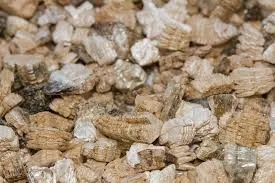Nov . 06, 2024 02:48 Back to list
Applications and Benefits of Fine Iron Powder in Industrial Processes and Technologies
The Significance of Fine Iron Powder in Modern Applications
Fine iron powder, a crucial material in various industrial and technological applications, has gained considerable attention due to its unique properties and versatility. With particle sizes typically ranging from 1 to 100 micrometers, fine iron powder is employed in a range of sectors, including metallurgy, electronics, and automotive manufacturing. Understanding the characteristics and applications of fine iron powder can illuminate its importance in contemporary industry and technology.
Properties of Fine Iron Powder
Fine iron powder possesses several distinctive physical and chemical properties that make it ideal for various uses. Its small particle size grants it a high surface area, which enhances reactivity and allows for better sintering properties in metal fabrication. This is particularly beneficial in the production of compacts, where fine iron powder can be mixed with other materials to produce uniform and dense metallic parts.
Additionally, fine iron powder exhibits excellent magnetic properties due to its ferromagnetic nature. This characteristic is essential in the manufacturing of electronic components, such as inductors and transformers, where efficient magnetic response is crucial. The fine iron powder's ability to be alloyed with other metals provides opportunities for enhancing its properties, catering to specific industrial needs.
Applications in Industry
One of the most significant applications of fine iron powder is in powder metallurgy. In this process, fine iron powder is compressed and sintered to create components that are both strong and lightweight. This technique is widely used in the automotive industry for producing parts such as gears, bearings, and other high-performance components. The ability to create complex shapes with minimal waste makes powder metallurgy an attractive option for manufacturers seeking efficiency and sustainability.
fine iron powder

In the realm of electronics, fine iron powder is increasingly employed in the production of magnetic materials. Its utilization in inductors, transformers, and magnetic cores allows for smaller, more efficient devices that meet the growing demands for miniaturization in electronics. Fine iron powder is also used in magnetic recording media, which are crucial for data storage in computers and other electronic devices.
Moreover, fine iron powder plays a vital role in additive manufacturing, or 3D printing. Iron-based powders are used in various techniques, including selective laser sintering and binder jetting, to create intricate metal parts layer by layer. This technology not only enables the production of complex geometries but also allows for customization, which is increasingly important in industries such as aerospace and healthcare.
Advancements and Innovations
Recent innovations in the processing and synthesis of fine iron powder have led to the development of powders with improved characteristics, such as enhanced flowability, better particle morphology, and tailored surface properties. These advancements have expanded the potential applications of fine iron powder, making it an integral component in the production of high-performance materials.
Research into environmentally friendly production methods for fine iron powder is also on the rise. Traditional processes can be energy-intensive and may generate hazardous byproducts. However, emerging techniques, such as using renewable energy sources for powder production and exploring bio-based reduction methods, aim to mitigate the environmental impact associated with fine iron powder manufacture.
Conclusion
Fine iron powder is a remarkable material that underpins a wide array of industrial applications, playing a crucial role in advancing modern technology. Its unique properties make it indispensable in sectors ranging from automotive to electronics and additive manufacturing. As research and development continue to advance, the future of fine iron powder appears promising, with the potential for new applications and more sustainable production methods. This versatile material not only demonstrates the importance of traditional metalworking techniques but also highlights the ongoing innovation within the field, paving the way for a more efficient and technologically advanced future.
-
Fe-C Composite Pellets for BOF: Enhance Steelmaking Efficiency
NewsAug.07,2025
-
Eco-Friendly Granule Covering Agent | Dust & Caking Control
NewsAug.06,2025
-
Fe-C Composite Pellets for BOF: High-Efficiency & Cost-Saving
NewsAug.05,2025
-
Premium Tundish Covering Agents Exporters | High Purity
NewsAug.04,2025
-
Fe-C Composite Pellets for BOF | Efficient & Economical
NewsAug.03,2025
-
Top Tundish Covering Agent Exporters | Premium Quality Solutions
NewsAug.02,2025
